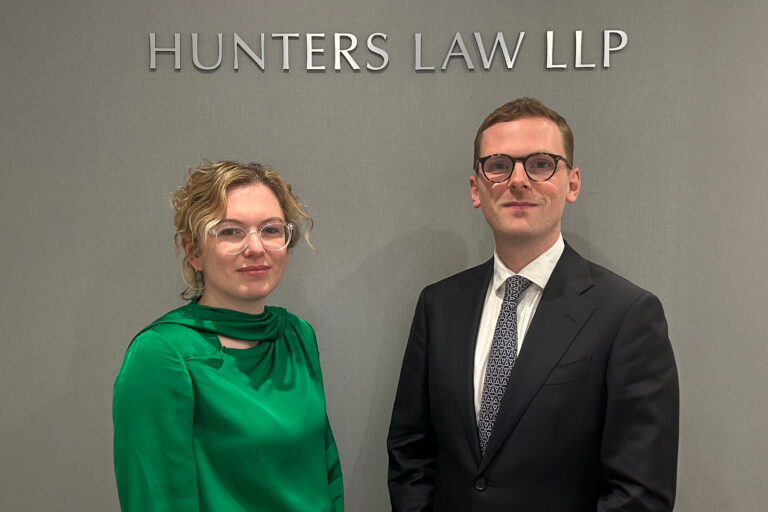Henry Hood examines the recent judgment in X v Y [2022] and the danger of fraudulent manipulation of digital documents in ThoughtLeaders4 HNW Divorce
![Henry Hood examines the recent judgment in X v Y [2022] and the danger of fraudulent manipulation of digital documents in ThoughtLeaders4 HNW Divorce](https://www.hunterslaw.com/wp-content/uploads/2024/02/towfiqu-barbhuiya-B0q9AkKV6Mk-unsplash-1024x683.jpg)
Henry’s article was originally published in ThoughtLeaders4 HNW Divorce Issue 10, published 13 October 2022, and can be access here.
Digital manipulation of documents
HHJ Hess’s recent judgment in X v Y [2022] EWFC 95 came with a post-script warning of the danger of fraudulent manipulation of digital documents – one of the darker sides of the digital age.
The issue has been highlighted over the past couple of years by practitioners including Helen Brander and Byron James. This intervention from HHJ Hess, the Lead Judge of the London FRC, should raise further awareness of what is undoubtedly a cause for concern.
In X v Y, the forged document in question was not produced during the proceedings, but several years earlier, and sought to inflate rather than deflate the husband’s financial position – yet still had a most deleterious effect on the wife.
The parties, neither of whom was originally from the UK, had, following their 2002 marriage, been living in the husband’s home country where he had a successful career as a tech entrepreneur, enabling the parties and their two children to enjoy a good lifestyle. However, in 2015 the husband tricked his wife into moving to England using forged documents.
The husband had been running, and largely owned, a successful business, and wanted to move to England. The wife was less keen, but the husband persuaded her that the move would increase his financial success. He told her that a company wished to buy his business for £80,000,000 and produced a draft sale contract at that price, as well as a bank statement purporting to show that the buyer had made a down-payment of £8,000,000.
On the basis of those documents, the wife agreed to move. Whilst they initially continued to live a good lifestyle, in 2018 the husband ceased paying the rent on the family home and the children’s school fees. By the time of the hearing the wife was dependent on benefits and the children (now 15 and 18) had serious medical problems, worsened by stress, and were no longer in any education.
The husband maintained in the proceedings that the 2014 documents were genuine but that the deal had unravelled. However, the wife had obtained from the bank a genuine bank statement for the account from the period, which did not show the transaction. Although the husband suggested that because he had had to return the funds they ceased to appear on the bank statement, HHJ Hess found, unsurprisingly, that the husband had dishonestly and falsely manufactured the presented 2014 bank statements to mislead the wife into moving to London. Whilst there was no direct evidence that the draft sale contract was faked, HHJ Hess regarded it with suspicion.
As HHJ Hess noted, this issue was by no means the only unsatisfactory evidence of the husband’s evidence’; the husband was ‘both evasive and obstructive. In a further indication of his casual approach to the manipulation of digital media, the husband claimed that recent social media images of him enjoying expensive activities, at a time when he purported to be insolvent, had been deliberately photo-shopped, as he understood everybody did this sort of thing on the internet.
The judge concluded that the husband was dishonest and unreliable and that everything he said should be treated with a great deal of caution; ultimately the wife’s capital claims were adjourned on the basis that a one-off division of capital at this point would be unjust.
In a post-script to his judgment HHJ Hess explained his decision to publish it on his wish to draw wider attention to the ability of dishonest parties to manufacture bank statements (and other documents) which, for all practical purposes, look genuine, but which are in reality not in that category.
The case follows a growing number of media reports of digital manipulation of documents in financial remedy cases, with the BBC reporting in June 2022 that a man who had dishonestly edited emails from estate agents to lower the value of the family home was jailed for seven-and-a-half months; That man discovered after the wife requested a copy of the email from the estate agent. In an earlier case in 2021 a man who had disclosed doctored bank statements in a variation application to show a lower income was jailed for nine months. He had been caught out after counsel (Ben Fearnley of 29 Bedford Row) spotted an entry on the statements for 31 September, and then checked the metadata on the emailed explanation and new statements from the bank.
For many of us older lags, it is hard to recognise the current reality that for those with the appropriate expertise, a pdf bank statement or payslip is now as easily manipulated as an Excel spreadsheet or Word document. Whilst pdfs were once considered reliable, it is clear that we must now be ready to be significantly less trusting of them.
It has been proposed that we have guidance under which the starting point is not to trust the content of any document which has not been verified by the original third party or through the document’s underlying metadata. The difficulty, of course, is the additional time involved, and thus greater expense to our clients, in undertaking such checks. The challenge for the profession is to work out the appropriate balance in circumstances where the prevalence of fraudulent manipulation of digital documents is unknown. One hopes it is a small minority of cases, but we must recognise that in cases where it does occur, the consequences for the other party could be severe.
Whilst we may see judicial guidance on the verification of documents in due course, for now we must all ensure that we are on high alert for the possibility of digital manipulation. A history of fraudulent behaviour by a party may be a red flag large enough to justify seeking that all documents supporting their disclosure be sent directly to solicitors from the third-party providers. Other flags should include our client’s insistence that something is not right with the documents, inconsistencies (even seemingly minor ones) in a document’s appearance, discrepancies between documents, and a general approach of evasiveness or obstructiveness on the part of the other party.
HHJ Hess’s call must be a warning to us all.





